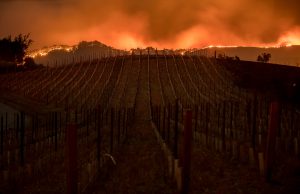New Diseases, Same Problems
The art of growing and making wine is tough enough. But most wine producers also have to deal with pests, diseases and unforgiving weather conditions.
Among these, the worst of the worst is trunk disease – which cannot be treated once it has occurred. Not only do the affected vines die – but any replacement vines are at risk of being affected too. So what is this devastating disease?
Trunk disease causes decay in the woody-section of the vines (the trunk) and causes massive yield loss – and eventually – the death of the vine. This disease takes form in four different types of fungi – each type causing major devastation.
For older, established vines, the first signs of the disease come in the form of discoloration, drying and dying of the leaves and arms.
For younger vines, the symptoms include, wilting, retarded growth and no sprouting. However, sometimes in both vines, the disease can go completely undetected.
This disease is often spread from infected vines into the pruning wounds of healthy vines through airborne spores.
The effect of this disease is horrifying – with almost 15% of French vineyards affected by this disease. In France alone, the 1 billion dollars is lost annually in wine-production loss. But France isn’t the only ones affected by this disease. Italy, Portugal, Argentina, Turkey, the US, Australia and New Zealand all have similar losses due to these fungi. Some countries report as much as 88% of their vines being affected in some way.
Prevention
To prevent further destruction caused by Trunk Disease, the wine industry is taking major steps in controlling and preventing it. Some of those steps include ensuring impeccable hygiene when nursing young vines. Any wounds during grafting and pruning can create easy access for the fungi – so extreme measures are taken to protect those wounds. In some instances, the grafts are covered with a fungicide which acts as protective layers against the fungi.
A different approach, using hot water to as a way of sanitizing the vines, is also being practiced. This is rather risky, however, since it takes quite a toll on the vines. Before this practice is done, the risks are usually evaluated beforehand.
In France especially, a new method involves cutting out specifically decaying parts of the vine – which hinders the spread of the disease.
Other than that, there is also research being done in possibly using rootstock of varietals that are more resistant to the disease – and cultivating them in nurseries.
The extent to which viticulturists are willing to go to prevent this disease is endless – considering the amount of money this disease could potentially cost a producer. Not only is it an expensive disease to deal with, but also to prevent.
The origin of this disease cannot be pinpointed – but has clearly come along a few decades ago. Prior to the 1970’s this disease was controlled by using sodium arsenate spray – but was banned in the 1970’s due to its extremely harmful effect on humans. Throughout the years, new developments are constantly made concerning the disease and how to manage it – with no single cure found yet. Understanding how the fungi are spread and how to prevent this spread, we hope the coming years will see a dramatic fall in affected vines.







